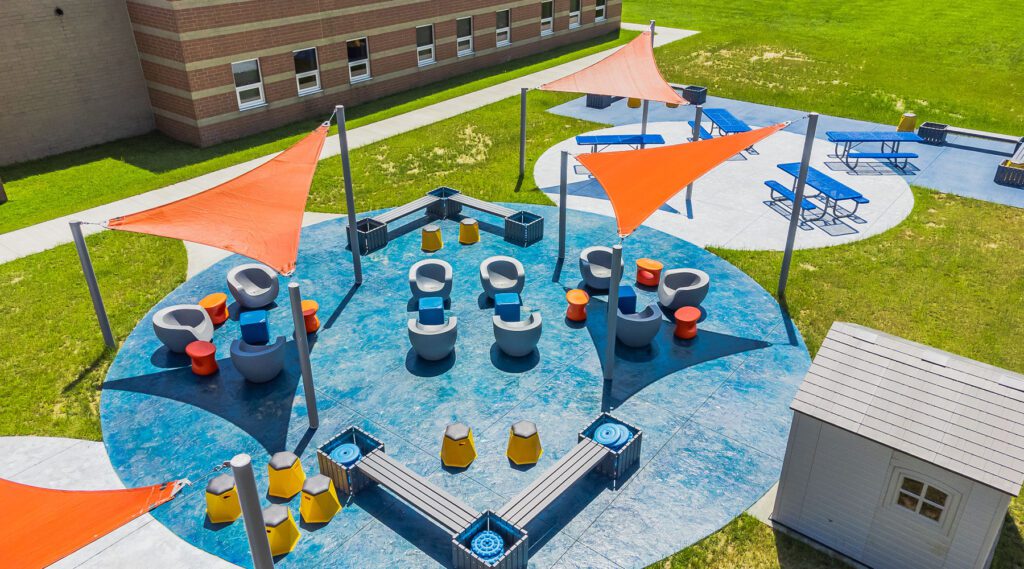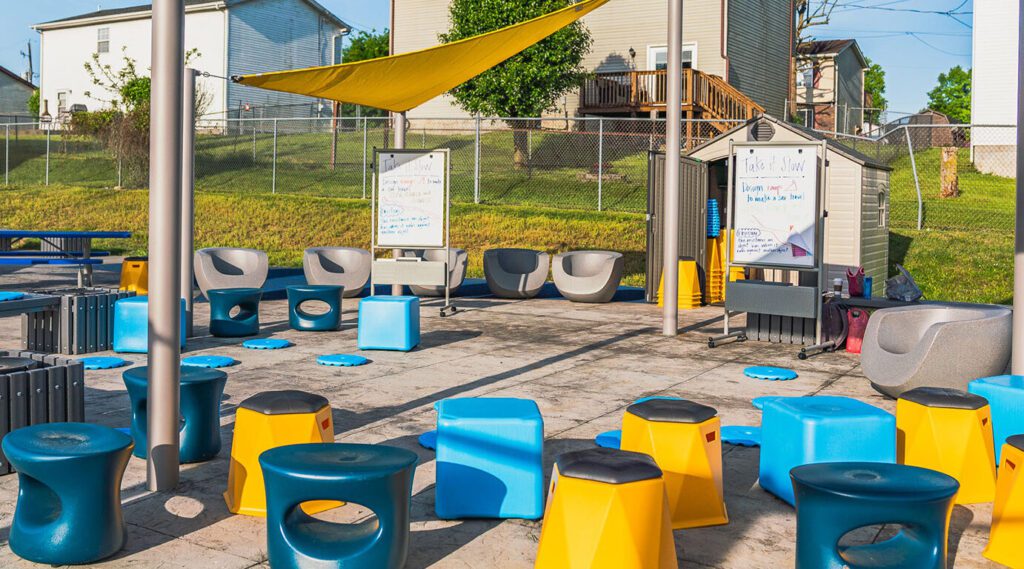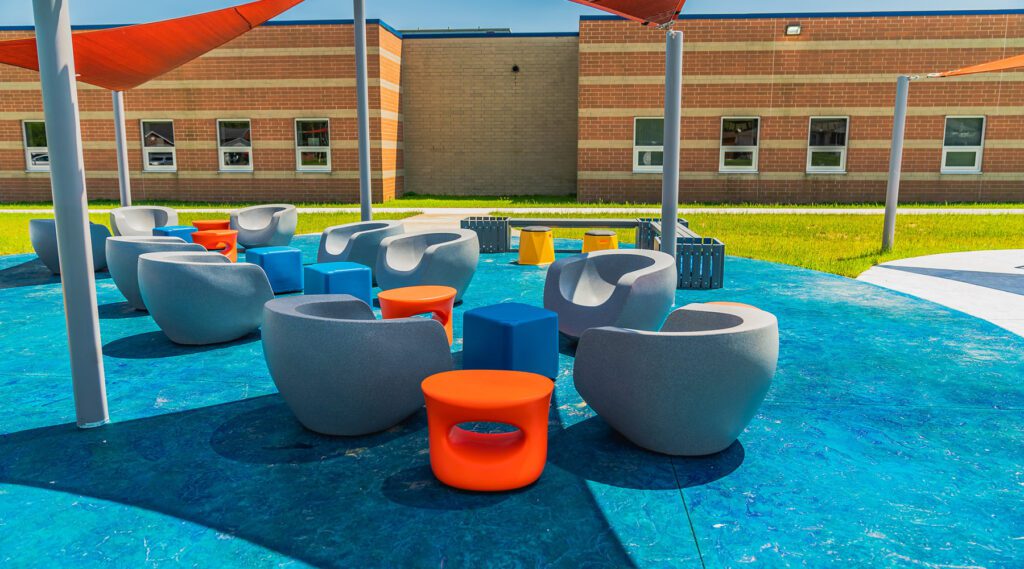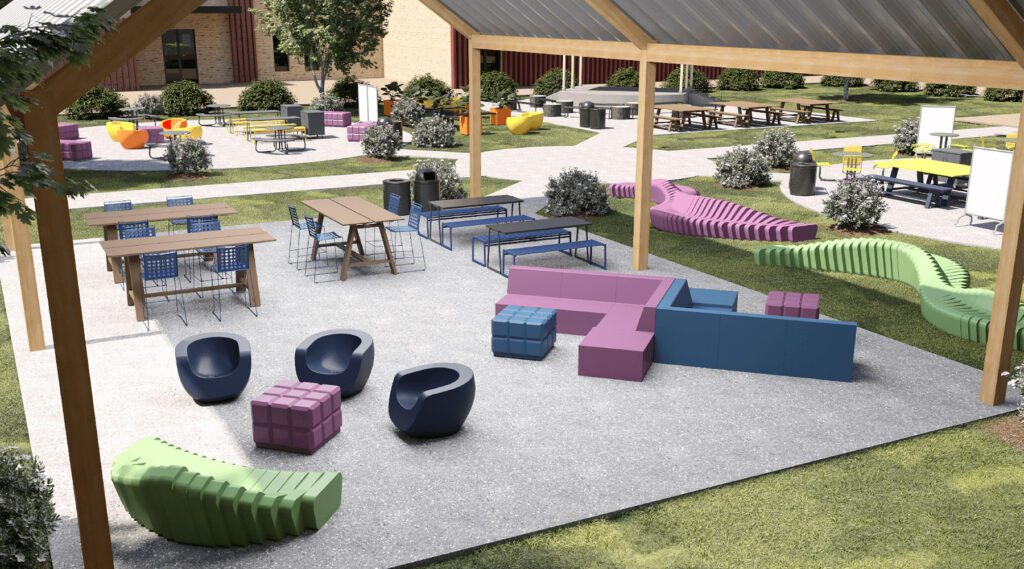
A Guide to Outdoor Classrooms
There’s something about the outdoors that softens our edges. Light filters through leaves, a breeze carries conversation, and suddenly the boundaries between learning and living feel a little more fluid. It’s a space where curiosity expands, voices rise and fall naturally, and the tempo of the day slows just enough for wonder to creep in.
More than ever, schools are recognizing that the best learning doesn’t always happen inside. This article explores how thoughtfully designed outdoor classrooms can elevate learning across ages, subjects, and seasons. From health benefits and design strategies to shifting school culture, we’ll look at what it takes to bring education into the open air and why it’s worth the effort.
Proven Benefits of Outdoor Education
Research has long shown that spending even just a few minutes outside in a natural setting has a positive effect on anyone’s mentally and physical wellbeing. But there have been a myriad of revelations about the positive benefits that nature can provide specifically for students. In addition to reducing stress, natural settings can enhance cognitive abilities, increase physical activity, and even reduce symptoms of attention deficit disorder.
Research shows that outdoor learning improves academic outcomes while also supporting mental and physical health.
Academically speaking, studies on outdoor classrooms and other nature-based education reflects an increase in academic performance. For example, the American Institutes for Research found that, “Students in outdoor science programs improved their science testing scores by 27%.”
Clearly, outdoor classrooms offer schools a chance to change up the scenery while actively supporting the emotional well-being and cognitive readiness students and teachers alike.

Designing Outdoor Classrooms: Essential Elements
While technically you could throw a few desks outside, put them next to a tree, and call it an outdoor classroom, any effective learning environment requires a bit more consideration. Outdoor spaces must be intentionally designed, with features that support both instruction and exploration. With that, here are a few key elements to keep in mind when planning for an outdoor learning environment:
Outdoor learning spaces work best when they’re built with the same intentionality as indoor classrooms.
Safety and Supervision
One of the most important design considerations when creating any learning environment is student safety. “Immediately, we need to think about things like line of sight — can I still see and hear all my students? — as well as what we need to build or have in the environment to keep them protected,” says Victoria Veneziano, Learning Experience Coordinator at Meteor Education. Thoughtful positioning of seating, pathways, and teaching zones helps ensure students stay engaged and supervised, while giving teachers the confidence to use the space consistently.
Student Choice and Agency
Outdoor classrooms should offer the same opportunities for choice and agency that are present in strong indoor environments. Flexible seating, movable workstations, and space to group or spread out allow students to decide how they learn best in the moment. This sense of autonomy and comfortability can lead to greater engagement, ownership, and confidence in their learning, regardless of the environment.
When students have choice in how and where they learn, engagement and confidence naturally follow, both indoors and out.
Weather-Resilient Materials
Every element in the space, from seating to storage, should be built to withstand weather, movement, and daily use. Materials need to hold up to sun, rain, wind, and temperature swings. As Bethany Smith, Learning Environment Specialist at Meteor Education, puts it, “We want to make sure that what we’re putting outside was designed to be outside in the elements.”
Shelter and Shade
Protection from the sun is one of the most essential features of any outdoor learning space. Shade structures help keep students cool, focused, and safe, especially during warmer months when UV exposure can quickly become a health concern. Covered areas also add flexibility, making it possible to continue learning even during light rain or shifting weather conditions.

Tools and Teaching Materials
For outdoor classrooms to work long-term, teachers need easy access to the tools of their trade. That might mean weather-safe storage bins, portable carts, or designated areas for art, science, or writing supplies. The easier it is for teachers to transition outside, the more likely they are to do it regularly and with success.
Effective outdoor learning requires practical tools — portable storage, durable materials, and easy access to what teachers use every day.
Tech Integration
Being in nature offers a rare chance to unplug and step away from screens, allowing ourselves to reconnect with the physical world. Still, there are moments when certain pieces of tech can enhance instruction, even outside. Rolling A/V equipment, smart boards, and other digital tools can extend the functionality of outdoor spaces without disrupting their natural rhythm. Of course, going back to shelter and shade, make sure that your tech equipment is protected and durable to withstand the elements.
How Schools Can Embrace Outdoor Classrooms
More than a design challenge, creating effective outdoor classrooms is a cultural shift. For outdoor learning to become routine, educators need support in understanding the value it provides. Professional learning sessions, planning time, and clear examples of what outdoor instruction can look like are all key.
When educators understand why outdoor learning matters and how to make it work, they’re far more likely to embrace it with confidence.
It also helps to model the behavior. When school leaders use outdoor spaces themselves — for meetings, activities, or events — it sends a strong signal that learning doesn’t have to stay indoors. These visible examples normalize the practice, helping remove the appearance of novelty and establishing outdoor classrooms as part of the school’s identity.
Start Early, Grow Bold: Outdoor Learning Across Ages
The foundation for outdoor learning starts early. When pre-K and elementary students are introduced to the outdoors as a space for exploration — not just where the playground lives — it shapes how they approach learning for years to come. Incorporating manipulatives, art, storytelling, and hands-on materials outside helps students see nature as a normal part of their classroom environment.
Play is the most natural form of learning. Outdoor classrooms make space for it, encouraging curiosity, movement, and moments of joyful discovery.
Older students still need space for unstructured, hands-on learning, but school environments often leave little room for it. Outdoor classrooms give middle and high school learners permission to rediscover that freedom. “Bringing learning outside gives you space, laughter, and play,” says Veneziano. “And we forget sometimes that play is the most organic and natural way of learning. That’s how we begin — we just start playing when we’re little.”

Outdoor environments tap that instinct back into focus, reminding students of how energizing learning can be when it’s allowed to breathe.
Conclusion
Bringing learning outdoors doesn’t require a forest, a farm, or a complete redesign of the school day. It only needs intention and a willingness to see nature as a partner in the learning process. When schools create spaces that are welcoming, functional, and built for exploration, they unlock new possibilities for connection, learning, and joy.
As Henry David Thoreau wrote, “All nature is doing her best each moment to make us well—she exists for no other end.” In outdoor classrooms, we give students and teachers a chance to feel that care firsthand. And in doing so, we expand what school can be.
outdoor classrooms
Ready to take your learning outside?
Check out our full line of outdoor solutions and bring fresh air into every lesson.